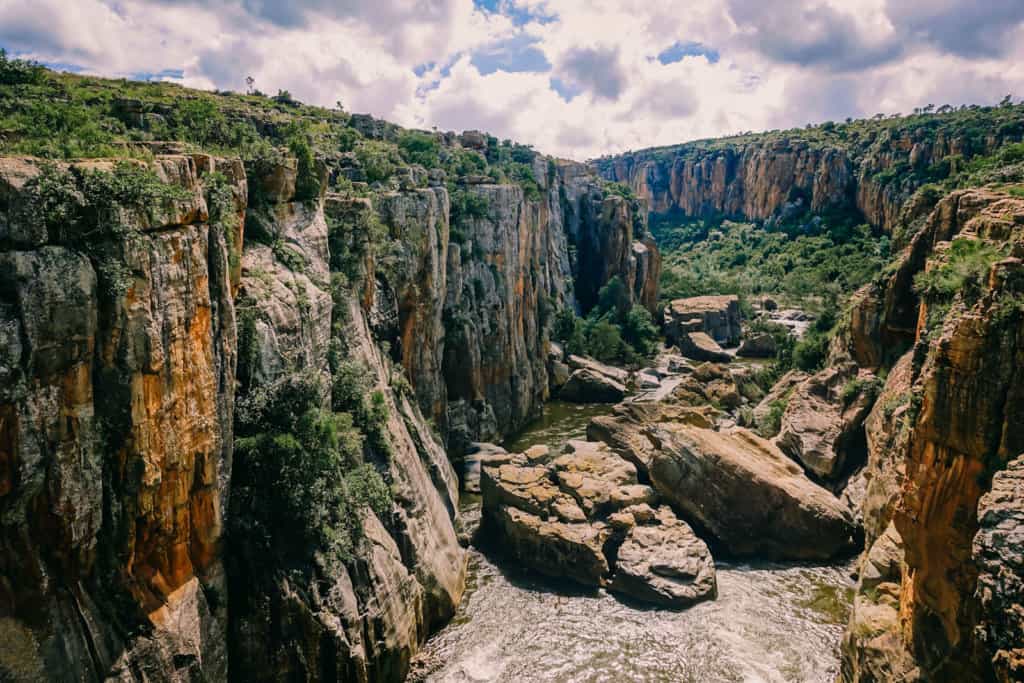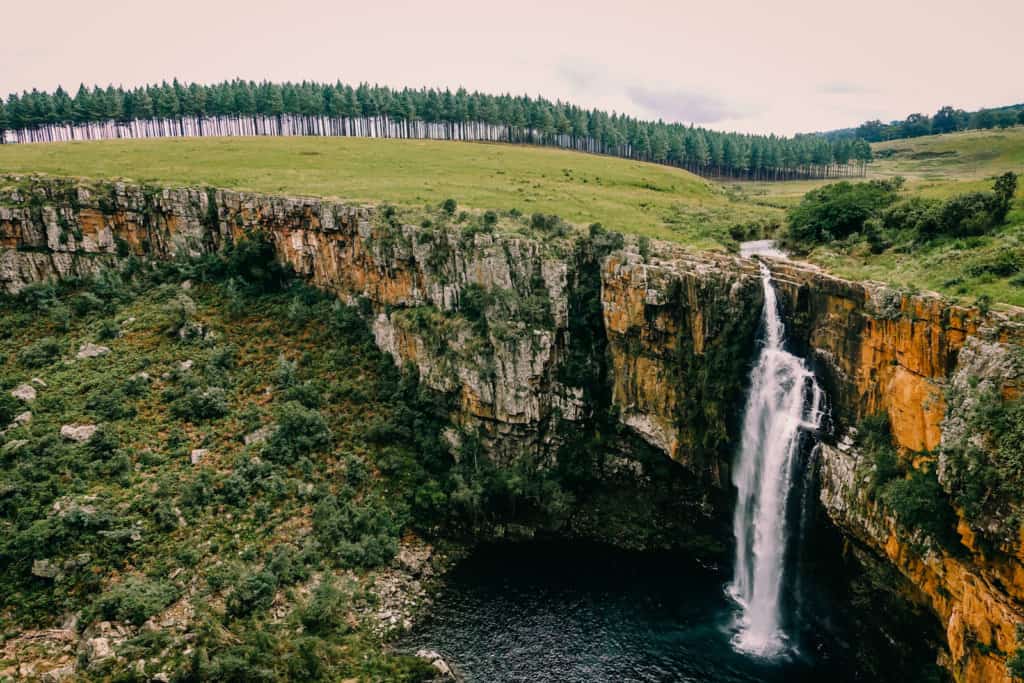Travel Guide | Kruger National Park | South Africa
Kruger National Park, South Africa
Text | Anninka Kraus
Photography | Tobias Kraus
It was early morning when pale sunlight streamed through the Savannah tree canopy and onto our bed, the air hinting at a hot and dry day, beckoning me outside. The dawn was filled with the raucous calls of exotic birds that know none of the restraint of Europe’s bird population. My favourite was a long-drawn-out whistle concluding with two staccato chimes.
Breakfast was beautifully presented on the porch encircling the main lodge and after missing out on dinner last night we eagerly tucked into muesli, yoghurt, fresh fruit, scrambled eggs and freshly baked bread rolls.
Deck chairs stood around a small infinity pool on the large deck at the rear of the main lodge overlooking the reserve towards the Northern Drakensberg, a section of the escarpment, which encloses the Central South African plateau. Unfortunately, no thirsty animals romped about the lodge’s private waterhole at half past nine, though the temperature rose above 30 degrees Celsius.
jump ahead.
Explore Kruger National Park, one of Africa’s largest game reserves, and Blyde River Canyon located in northeastern South Africa.

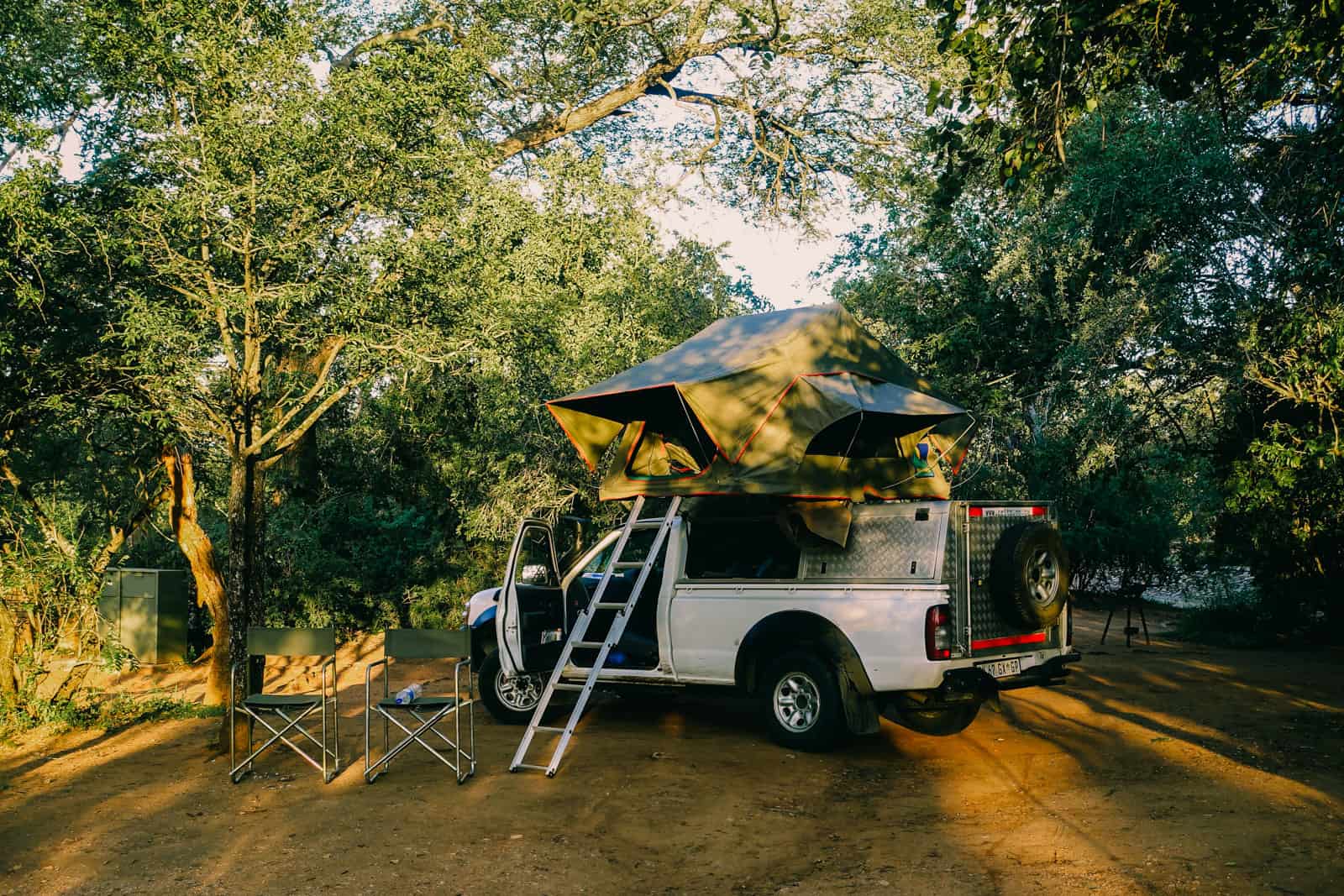
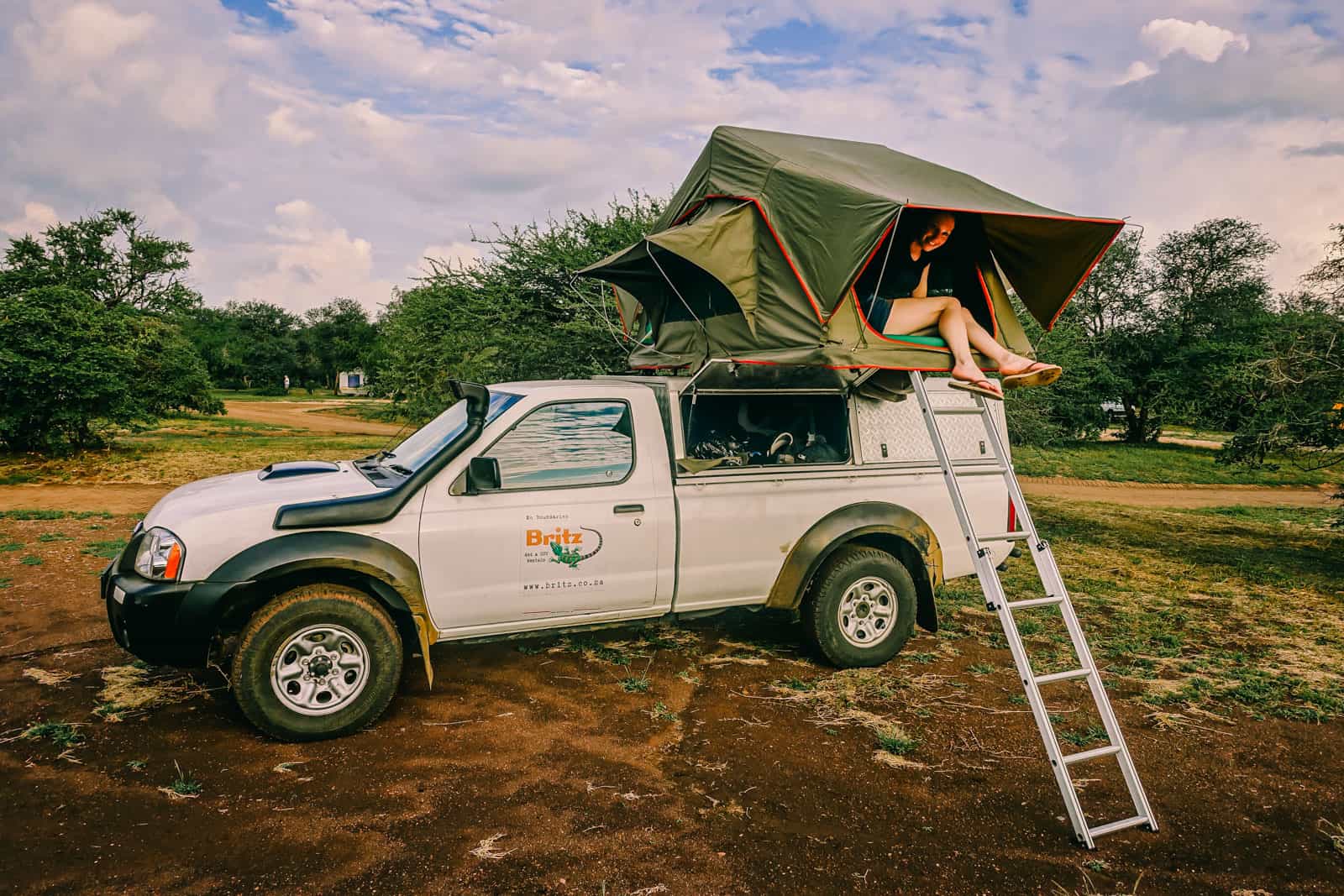


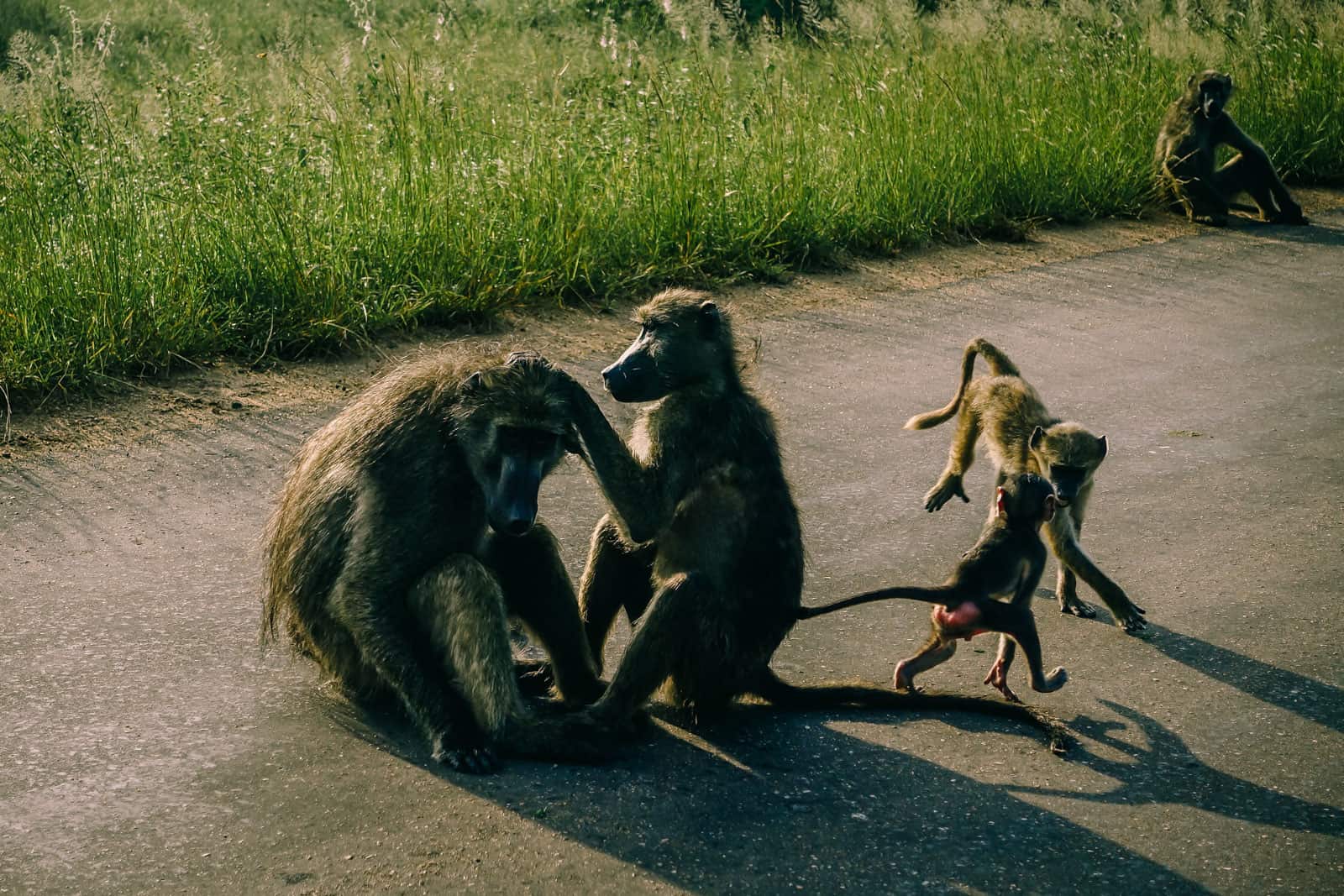
On safari in Kruger National Park
We entered Kruger National Park through Phalaborwa Gate. I was surprised that the lady who issued our tickets didn’t call attention to any park rules. With a bored expression on her face she simply stated, ‘You need to be out of the park by 6pm.’ When I asked if we needed to pay attention to anything, she pointed to the glossy flyer stapled to our electronically printed ticket, ‘You can read this’.
The lodge owner had told us that attacks on humans happen regularly in Kruger National Park, and that safari jeeps here have to comply with much stricter safety standards than in other national parks. They were both higher than the open jeeps in the Serengeti or Etosha National Parks and more sturdily secured on the sides.
On a road trip through Southeast Africa years ago, I remember our driver and guide Morrison telling us that the big cats in Kruger National Park are more aggressive than elsewhere. He said that they had learned to hunt humans, mostly illegal immigrants from Mozambique who tried to reach South Africa through the park that runs along nearly the entire length of the border between the two countries.
Kruger National Park is one of Africa’s largest game reserves, located northeast of Johannesburg. Though located in a ‘low malaria’ zone we took Malarone as we were there in the rainy season, which runs from September to May. While the park was a smidgen too comfortable to evoke that feeling of wilderness that you get on safari in Tanzania’s Serengeti Plain, Kruger can be explored independently in your own vehicle.
Green and flat savannah grassland, and Mopane trees dominated the Central Region of the National Park between Phalaborwa Gate, Letaba Camp, and Orpen Camp. This landscape was so very different to the infinite straw-coloured steppe of the Serengeti Plain in northern Tanzania, which scorched by the sun stretches all the way to the horizon. Kruger was a less typical safari experience and more of an oversized adventure zoo crisscrossed by tarred roads that have a 50kmh speed limit. In the spirit of adventure and a desire for seclusion we mainly kept to the dirt roads with a slightly lower speed limit.
While our host assured us that recent rain had replenished the water reservoirs, we saw dried out streams and parched grass along the roads, a reminder of the prolonged draught in the park last year during which rhinos and hippos died of thirst.
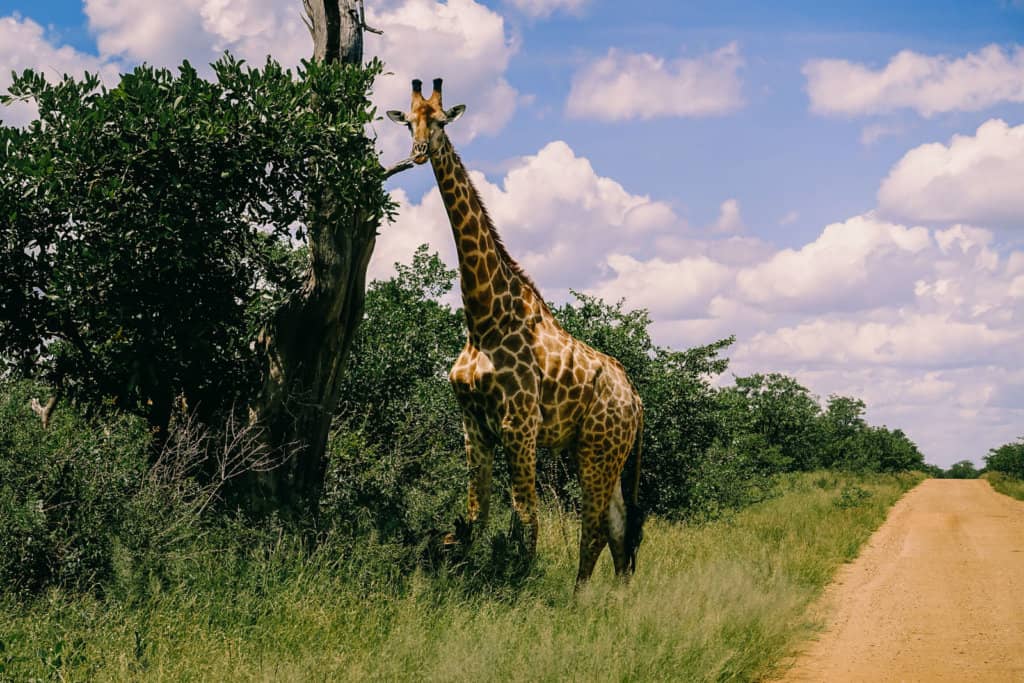
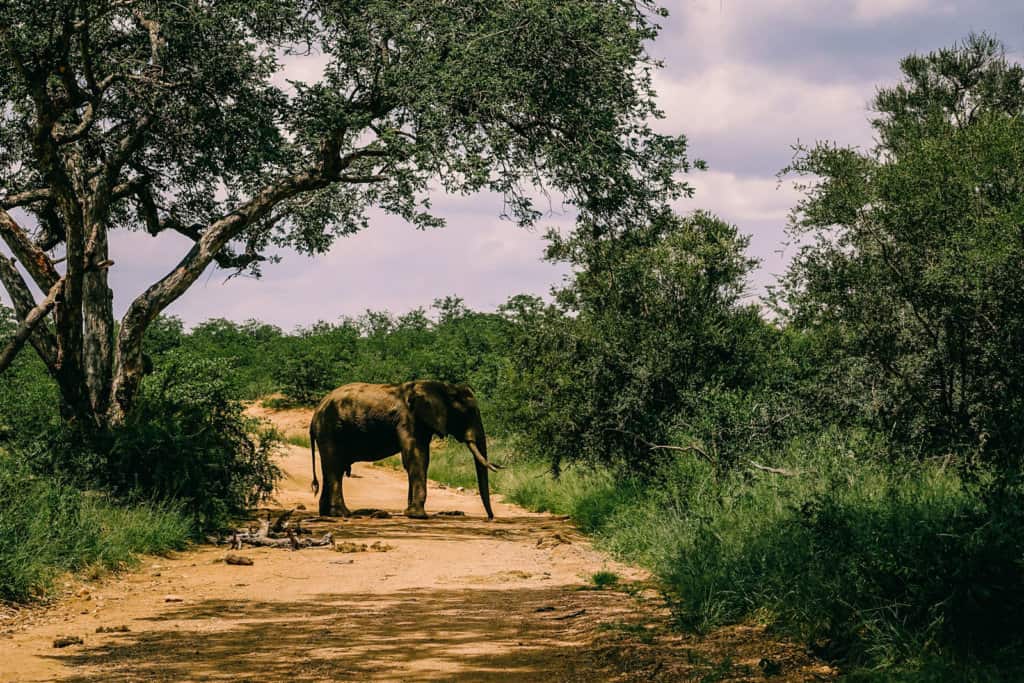
Less than an hour into the park a herd of elephants crossed the road in front of us and then splashed around in a muddy waterhole right by the roadside. Despite their enormous size, these giants cared for their offspring with touching gentleness. The baby elephant in their midst was at all times surrounded by several cows, carefully nudged into the waterhole, and splashed with mud to teach it that this is the best protection against parasites and the sun.
This gentleness stood in striking contrast to the impressive display of strength we witnessed when a bull elephant tore down several treetops only a few meters from our open window in much the same way I would snap a toothpick. With each crack, his trunk tore off another branch covered in foliage, which the elephant then cautiously shoved into its mouth. Following more cracking and the sound of chewing, the branch came back out, stripped bare.
The elephants were definitely more active and noisier than the giraffes that scrutinised us from above with a slightly arrogant expression and continued stripping the treetops, quite unperturbed by our appearance. The hippos were also unfazed by company, their tiny round ears the only visible part of them poking out of the waterhole, the rest of their voluminous bodies submerged below the surface. On a riverbank, scowling at us stood an African buffalo. While these are considered one of the Big Five game, they look rather unspectacular, like a large ox with horns, which is misleading considering they the most dangerous and aggressive of the Big five.
We didn’t see any rhinos until our last two days in the southern section of the park between Lower Sabie Camp and Berg-en-Dal. Tobi slammed on the breaks when one coming from the left trotted onto the dirt road just in front of us. Rhinos are not marked on the animal sighting boards in camps because of poachers, but this one found us anyway. It stopped dead as we turned off the engine, looking irritated and a little frightened, its tiny eyes out of proportion with the two tonnes of body bulk. The anterior conical horn above its mouth was considerably larger than a smaller horn located above its eyes and I stared at it wondering why anyone would kill a slate-grey colossus on tiny short legs, walking about wriggling its ears to shoo away pestering flies, all for the sake of this rather unimpressive keratin horn.
In a KLM in-flight magazine, I had read a feature on the Black Mambas, not the snake variety, but a female majority patrol unit that guards rhinos and other endangered animals against poachers inside the Greater Kruger National Park, often at night, and always unarmed. They protect the boundaries of the Balule Nature Reserve and were recently honoured with the Champions of the Earth Award by the United Nations. I asked our host what the Black Mamba rangers do when encountering poachers and he told us, ‘They stand their ground and call for armed back up,’ but then he went to explain that because poachers now carried handguns as well as rifles to turn on guards, the Black Mambas would be carrying weapons themselves before long.
He told us that they were based just around the corner from the lodge and regarded as heroes in their impoverished communities, except perhaps by the poachers. The poachers frequently come from the very same communities but are swayed into the trade by the exorbitant prices the rhino horn fetches on the black market. I cannot comprehend the appeal for the life of me. To me it seems just as plausible that someone would sell strands of hair or nail cuttings on the black market. Perhaps the Vietnamese who drive the worldwide demand for rhino horns wouldn’t care about the source of their keratin ornament?
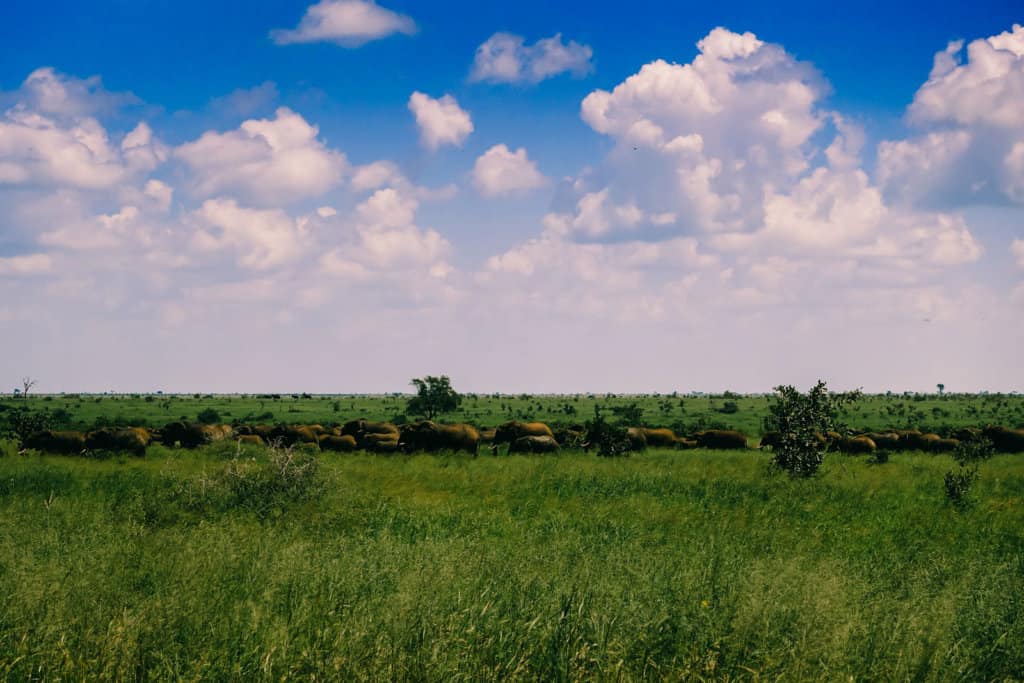
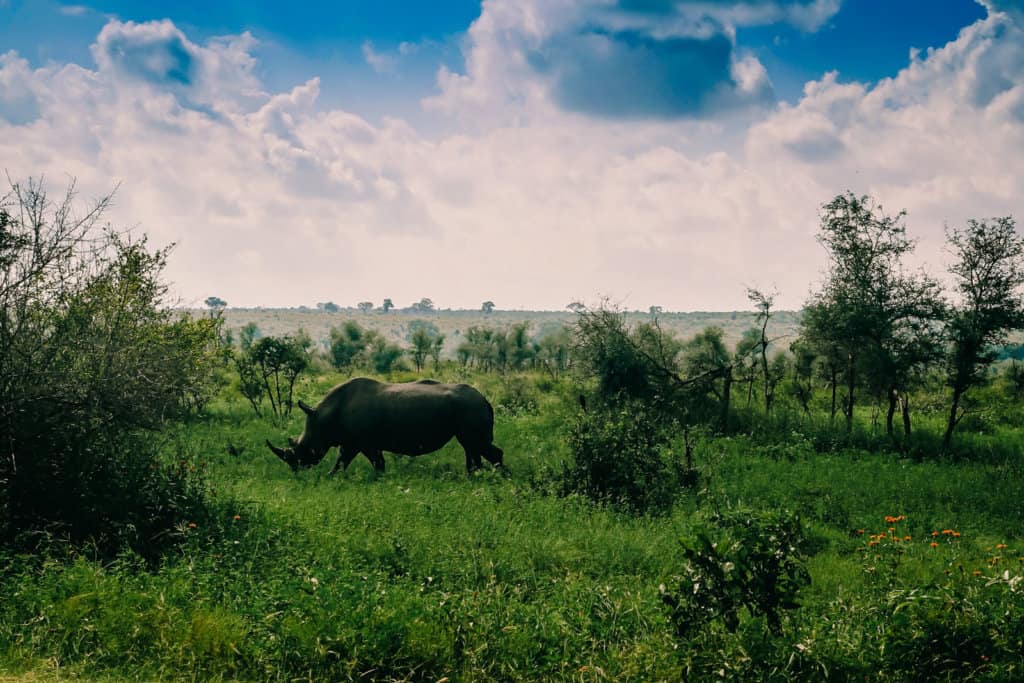
Zebras, kudus, and turtles trotted across our path, birds flew overhead, and a crocodile swam past sneakily submerged below the murky surface of a flooded river. We were engulfed in silence whenever we turned the engine off, but then slowly the quiet, subtle sounds of the savannah returned. Wind rustled through the tall grass, and the rushing of water intensified after rainy nights. Birdcalls were louder and longer here, and they twittered more artfully than the birds I was used to in Central Europe. It sounded like a full-sized orchestra was assembled in the treetops, the air filled with whistling, chirping, blasting, and soft tinkling.
Smells were amplified too and the scent of dust mingled with a heavy sweet fragrance like flowery perfume in the sun-baked arid region around Phalaborwa, whereas further south the soil smelled wet and slightly mouldy after heavy rainfall. We couldn’t identify most of the trees and shrubs but recognised the Lovage plant with its fresh scent, much like celery and parsley. Less pleasant was the odour of one elephant’s heavily wrinkled butt, which filled our car window while we watched yet another depredation of the treetops by the road. Elephants eat constantly, between 16 and 20 hours a day, and I was astonished to watch that while it gulped down its food noisily, it also moved with the grace of a ballerina, gingerly and silently positioning its large feet.
After three nights we swapped the luxury of the lodge with a rooftop tent on top of our jeep at two campsites in the very south of the park: Lower Sabie and Berg-en-Dal. At Berg-en-Dal a herd of elephants grazed just outside the wire-mesh fence surrounding the camp during sunset hours while in Lower Sabie Camp there were baby warthogs, tame ‘camp hogs’, squeaking excitedly and racing about. The baby hogs were closely watched by their dishevelled looking parents with their bizarrely shaped heads, four hideous warts on their face, and crooked fangs, yet for some reason – possibly falling in love with The Lion King and particularly Pumbaa some twenty years ago – I still thought they were cute.
The camps and day picnic areas were as clean and well equipped as national parks in North America, yet unfortunately the staff in Kruger lacked the inspiring passion, friendliness, and enthusiasm of US rangers. The camps consisted mostly of bungalows and cottages with thatched roofs, and the areas for tents and campervans were generously proportioned. One thing that struck me as strange was that all bathroom facilities were equipped with more bathtub cubicles (without a shower head) than shower cubicles, and this was on campsites that reached 30 degrees Celsius in the shade. Being a vegetarian in braai haven (South African barbecue) proved difficult but I was overjoyed to find halloumi in a small supermarket amidst the predominance of rather large packs of meat.
The campsites were well equipped for barbecuing but we didn’t linger outside after eating due to an armada of moths, creepy-crawlies, and mosquitos that seemed to pounce as soon as dusk approached.
A lovely South African man in his early sixties shared his personal recommendations for Blyde River Canyon, the next stop on our agenda. We learned that he and his wife were retired and now pursuing their favourite pastime of travelling after decades of school and work. They followed the sun from place to place in their campervan, chatting with other campers at each spot, and spending a few months in each location. ‘Who needs routine and winter anyway?’ he laughed. Nobody, I very much agree! He told us that a friend of his had said to him that life is much like a measuring tape and that at age 60 there were maybe ten good years left to travel all over the country. To me ten centimetres seems like an awfully short piece of tape and quite a depressing thought, yet he seemed cheerful and dead set on making the best of it.
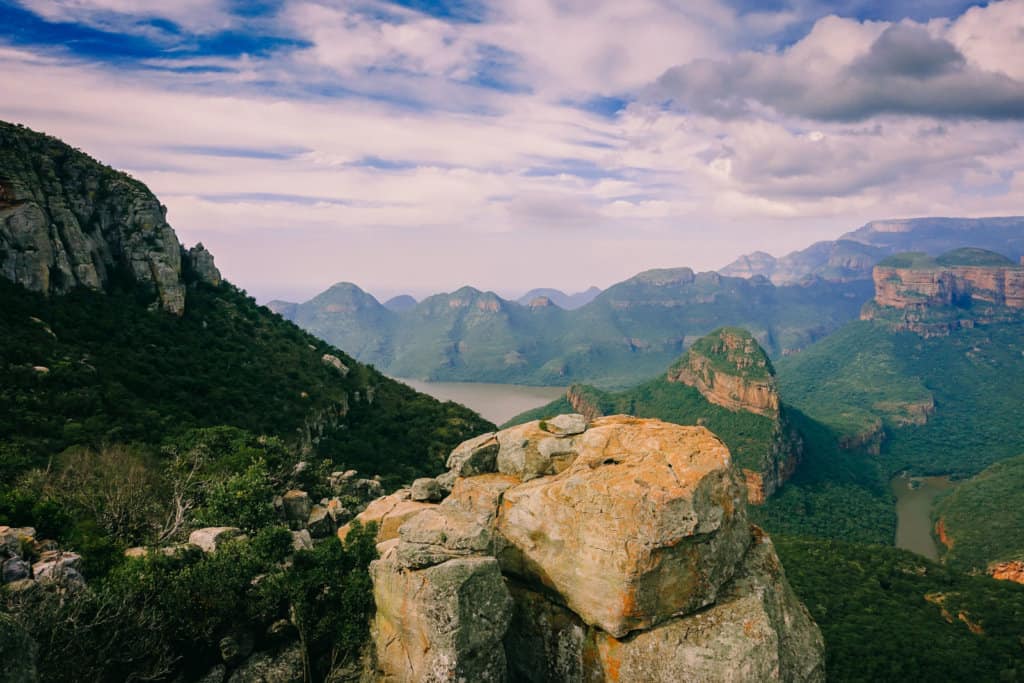
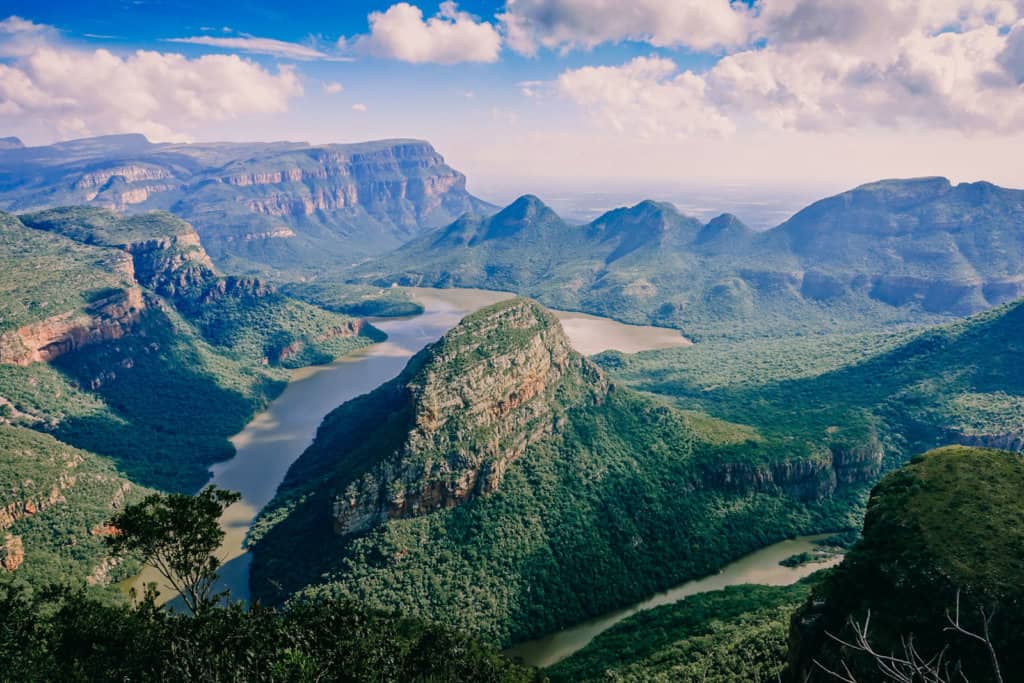
Blyde River Canyon
From Berg-en-Dal in Kruger National Park it is half a day’s drive to Blyde River Canyon. The 26km long and up to 800m deep gorge is composed mostly of red sandstone and counts as one of the world’s largest canyons. Its deep ravines were densely covered in dark green subtropical foliage and reminded me of photos of the Amazon region of Peru. The milky green Blyde River wound around mighty outcrops of hard quartzite sediment in broad loops, and hiking into the gorge on the premises of our accommodation (A Forever Resort) revealed spectacular views of the canyon from different heights and perspectives.
Pythons, vipers, and black mambas were displayed in terrariums at the campsite reception, and while the walk was beautiful, I couldn’t help but wonder how many of these snakes were also slithering through the underbrush alongside the overgrown trail. I began to wish I had put on long pants. After the hike we went for pre-dinner drinks, where we met Camille and Thierry, two young French biologists, who to our surprise had come here from the island Réunion. As this was also coincidentally our next stop and they were heading back to finish up their studies, we got ourselves an invitation to dinner the following week at their place in Saint Denis, the island’s capital.
From Blyde River Canyon we travelled south along the Mpumalanga Panorama Route to three outlooks, though Lisbon Falls turned out to be a rather unspectacular small waterfall and not worth seeing. Our first stop, the Three Rondavels viewpoint offered a spectacular panorama of the winding, green-red canyon, and three large, uniformly round blocks of stone showing slightly elevated, overgrown crests that have been likened to traditional African beehive huts. Fifteen minutes further south, we arrived at Bourke’s Luck Potholes, geological formations name after gold seeker Tom Bourke. Erosion from flowing water has formed the cylindrical rock sculptures, which are indeed a rare sight, but unfortunately were also a collection point for tourist crowds pouring out of dozens of coaches parked on the giant car park, complete with a curio armada (stalls selling tacky souvenirs).
We planned to go to a fourth viewpoint, named God’s window, but as the lovely pensioner with the imaginary measuring tape at Kruger had told us it was ‘God’s Window only in bright sunlight!’ and indeed when we drove past its point on the Drakensberg escarpment, a heavy veil of mist touched the ground and we kept going.
